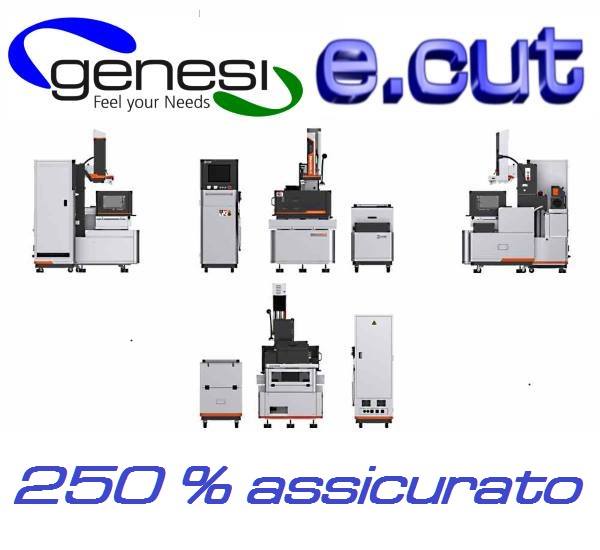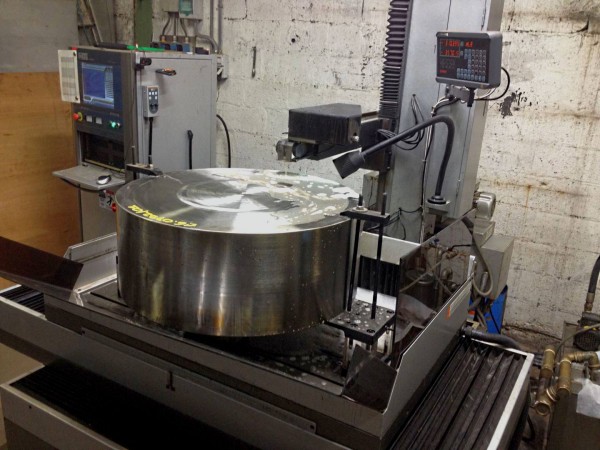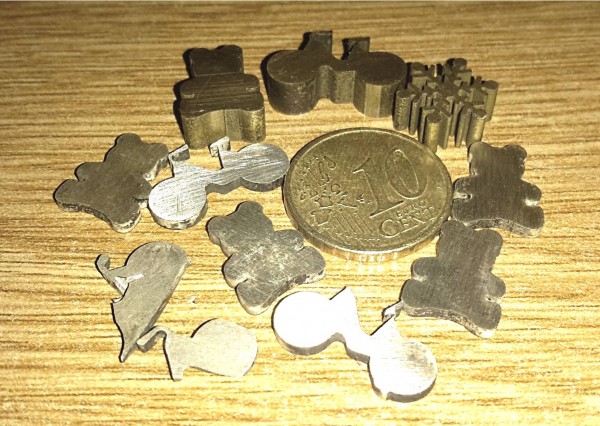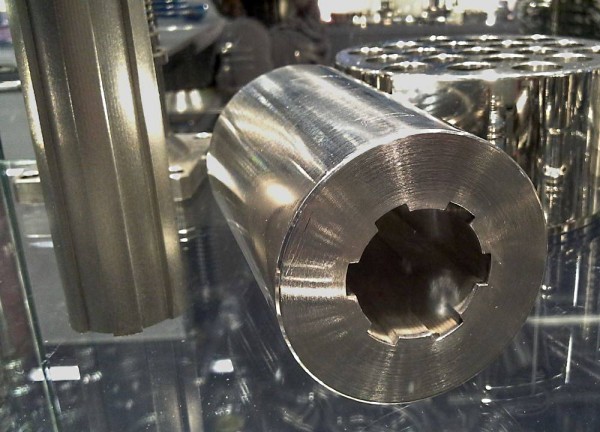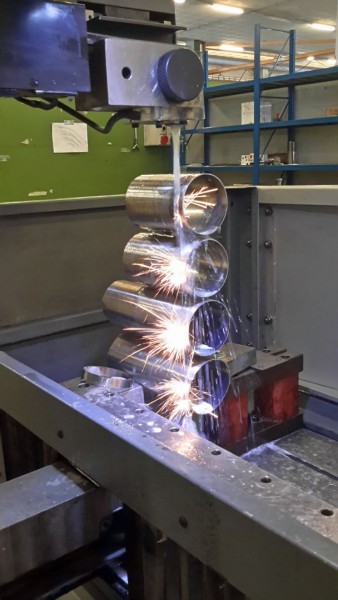250% insured with Ecut
Genesi’s efforts to make Ecut an avant-garde system, find these machines ready to fall within the characteristics necessary to ‘obtain the facilities provided by the budget law 2017 “Super depreciation 250%.
In the box below (Annex A of the law), the points where the Ecut system meets the required characteristics are highlighted in red.
EXAMPLE- (TAX ADVANTAGE)
If you purchase a “subsidizable” asset at a cost of €100,000, you can ‘proceed to the calculation of depreciation as if the cost of the asset had been equal to €250,000.
Cost of the asset = 100,000
Fiscal cost = 250,000
Tax savings (24%) = 60,000)
Actual cost of the asset = 40,000
Contact us, we will show you in detail, for each item highlighted, because ‘Ecut is part of the required characteristics.
Budget Law 2017, Part I, Section I
Article 1(8) to (13);
Super depreciation 250% – eligible assets and characteristics – Annex A
1) Capital goods whose operation is controlled by computer systems and/or managed
by means of appropriate sensors and drives.
. machine tools for removal
. machine tools operating with lasers and other energy flow processes (e.g. plasma,
waterjet, electron beam), electroerosion, electrochemical processes
. machine tools and plants for the realization of products through the transformation of the
materials or raw materials
. machine tools for plastic deformation of metals and other materials
. machine tools for assembly, joining and welding
. wrapping and packaging machines
. de-manufacturing and repackaging machine tools to recover materials and functions
from industrial waste and end-of-life return products (e.g. disassembly machines,
separation, crushing, chemical recovery)
. robots, collaborative robots and multi-robot systems
. machine tools and systems for conferring or modifying surface characteristics
of the products and/or the functionalisation of the surfaces
. machines for the additive manufacturing used in the industrial field
. machines, including tractors and operators, tools and devices for loading/unloading,
handling, weighing and/or automatic sorting of workpieces, lifting devices and
automated handling, AGVs and flexible conveying and handling systems, and/or
equipped with part recognition (e.g. RFID, viewers and vision and mechatronics systems)
. automated warehouses interconnected to the factory management systems.
Characteristics for Hyper depreciation 250%:
. control by means of CNC (Computer Numerical Control) and/or PLC (Programmable Logic
Controller)
. interconnection to factory computer systems with remote loading of instructions and/or
part program
. automated integration with the factory’s logistics system or supply network, and/or
with other machines in the production cycle
. interface between man and machine (HMI, ed) simple and intuitive
. compliance with the latest standards in terms of safety, health and hygiene at work
The above mentioned machines must have at least two of the following characteristics
to make them “similar and/or integrated with cyberphysical systems”:
. remote maintenance and/or remote diagnosis and/or remote control systems
. continuous monitoring of working conditions and process parameters by means of
appropriate sets of sensors and adaptations to process drifts
. characteristics of integration between physical machine and/or plant with the modelling and/or
the simulation of one’s own behaviour in the development of the process (cyberphysical system)
. devices, instrumentation and intelligent components for integration, sensorisation
and/or the interconnection and automatic control of the processes used also
modernising or revamping existing production systems
. filters and systems for the treatment and recovery of water, air, oil, chemical and organic substances,
dust with systems to signal the filtering efficiency and the presence of anomalies or
process alien or hazardous substances, integrated with the factory system and capable of
alerting operators and/or stopping the operation of machines and plants.
2) Systems for quality and sustainability assurance:
. coordinate and non-contact measuring systems (contact, non-contact, multi-sensor or based on
three-dimensional computed tomography) and related instrumentation for the verification of the requirements
micro and macro geometrical product for any level of dimensional scale (from large to large).
scale to the micro or nano-metric scale) in order to ensure and track the quality of the
product and which enable production processes to be qualified in a documentable manner, and
connected to the factory information system
. other in-process monitoring systems to ensure and track product quality and/or
of the production process and which enable production processes to be qualified in such a way that they are
documentable and connected to the factory information system
. systems for the inspection and characterization of materials (e.g. testing machines, etc.).
materials, machines for testing the products made, systems for testing/testing not
destructive, tomography) able to verify the characteristics of incoming or outgoing materials
to the process and which form the resulting product at the macro level (e.g. characteristics of the
(e.g. porosity, inclusions) and to generate appropriate test reports.
to be included in the company information system
. intelligent devices for testing metal powders and continuous monitoring systems
which allow production processes to be qualified by means of additive technologies
. intelligent and related marking and traceability systems for production batches and/or individuals
products (e.g. RFID – Radio Frequency Identification)
. systems for monitoring and controlling the working conditions of the machines (e.g.
forces, torque and machining power; three-dimensional wear of the tools on board the machine;
state of components or subassemblies of the machines) and production systems interfaced with the
Factory information systems and/or cloud solutions
. instruments and devices for the automatic labelling, identification or marking of
products, with a link to the code and serial number of the product itself so as to allow
maintainers to monitor the constancy of product performance over time and to act on the
process of designing future products in a synergistic way, allowing the recall of
defective or harmful products
. intelligent components, systems and solutions for management, efficient use and monitoring
consumption of energy and water and to reduce emissions.
. filters and systems for the treatment and recovery of water, air, oil, chemical substances, dust with
systems to signal the filtering efficiency and the presence of anomalies or alien substances to the
process or hazardous, integrated with the factory system and capable of alerting operators and/or
to stop the activities of cars and plants.
3) Devices for human-machine interaction and for the improvement of ergonomics and the
workplace safety in 4.0 logic
. desks and workstations equipped with ergonomic solutions that can adapt them in a way that
automated to the physical characteristics of the operators (e.g. biometric characteristics,
age, presence of disability)
. systems for the lifting/translating of heavy parts or objects exposed to high temperatures in
Able to facilitate the operator’s task in an intelligent/robotically/interactively manner
. wearable devices, communication equipment between operators/operators and system
production, augmented reality devices and virtual reality
Intelligent Human Machine Interfaces (HMIs) that assist the operator in safety and security matters.
efficiency of machining, maintenance and logistics operations.
